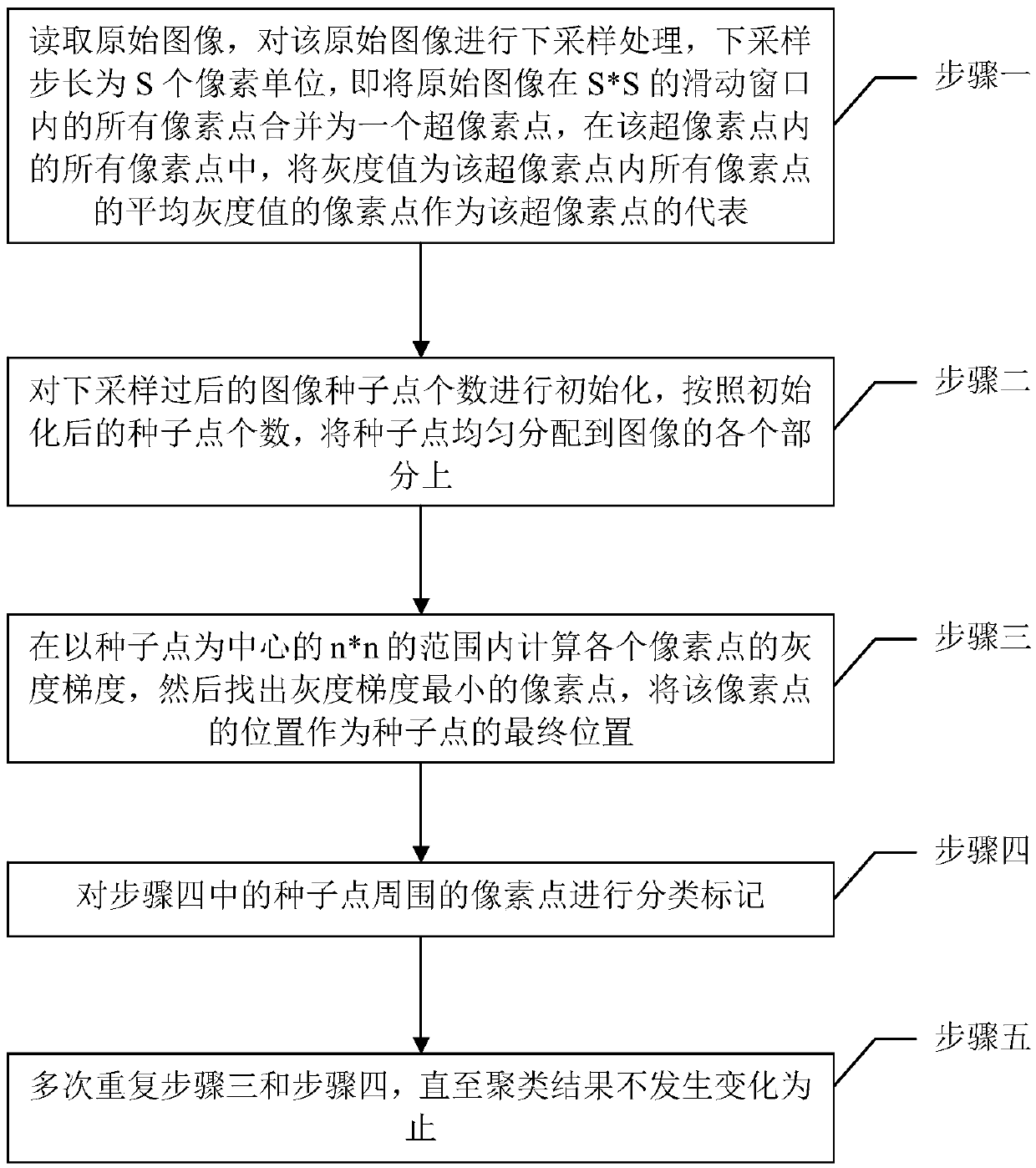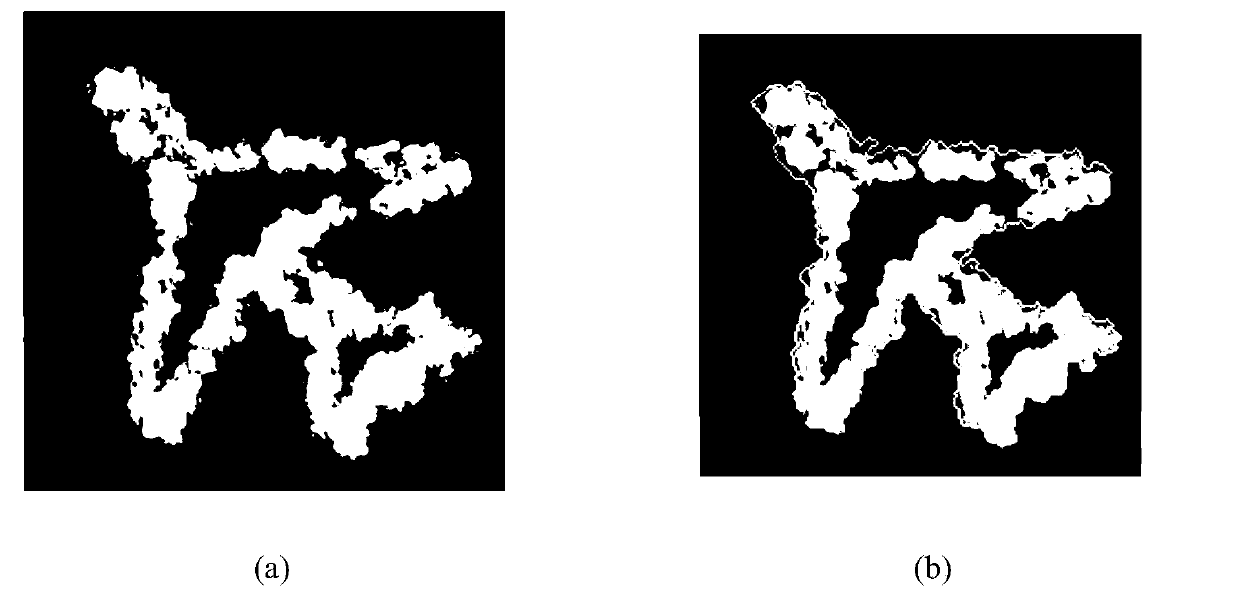A self-adaptive image target region segmentation method based on SLIC
A target area, adaptive technology, applied in the field of image processing, can solve problems such as low segmentation efficiency
- Summary
- Abstract
- Description
- Claims
- Application Information
AI Technical Summary
Problems solved by technology
Method used
Image
Examples
specific Embodiment approach 1
[0033] Specific implementation mode one: as figure 1 and figure 2 As shown, the SLIC-based adaptive image target region segmentation method described in this embodiment includes the following steps:
[0034] Step 1. Read the original image, and perform downsampling processing on the original image. The downsampling step size is S pixel units, that is, all the pixels of the original image in the sliding window of S*S are merged into one superpixel. The parameter value of a pixel is the mean value of the corresponding parameters of all pixels in the window. Among all the pixels in the super pixel, the pixel whose gray value is the average gray value of all the pixels in the super pixel is used as the representative of the super pixel, that is, the average gray value of the pixels in the window is used The pixel whose value is the gray value is used as the representative of all the pixels in this window area. For example, the original image is 100*100, with a total of 10,000 ...
PUM
 Login to View More
Login to View More Abstract
Description
Claims
Application Information
 Login to View More
Login to View More - R&D
- Intellectual Property
- Life Sciences
- Materials
- Tech Scout
- Unparalleled Data Quality
- Higher Quality Content
- 60% Fewer Hallucinations
Browse by: Latest US Patents, China's latest patents, Technical Efficacy Thesaurus, Application Domain, Technology Topic, Popular Technical Reports.
© 2025 PatSnap. All rights reserved.Legal|Privacy policy|Modern Slavery Act Transparency Statement|Sitemap|About US| Contact US: help@patsnap.com



